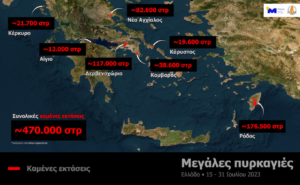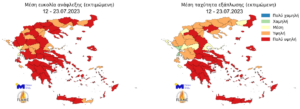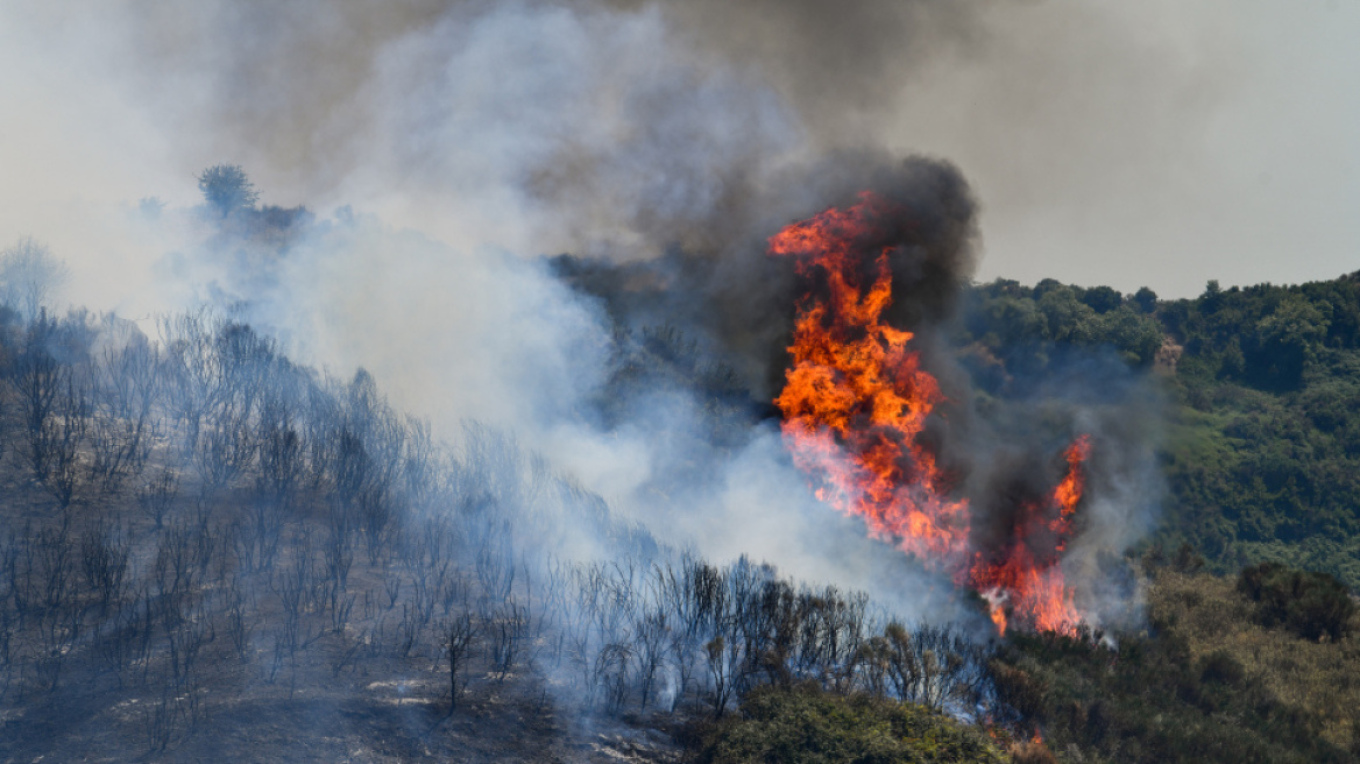The ecological devastation from the forest fires in Greece in 2023 was confirmed as a total of about 55,000 hectares were burnt, according to the European Forest Fire Observatory.
The very high temperatures and dry atmospheric conditions that affected Greece during the recent heat wave created an environment extremely favourable for the outbreak of large forest fires. During the period from 15 to 31 July, seven major forest fires (Corfu, Aigio, Dervenochoria, Attica/Kouvaras, Karystos, Nea Anchialos, Rhodes) occurred, burning a total area approaching 116,000 acres, according to the European Commission’s Copernicus rapid mapping service, while since the beginning of the year.

The approximately 550,000 hectares of burnt areas since the beginning of 2023 is already 30% more than the total areas burnt on average in Greece (~435,000 hectares) per year, as shown by the analysis of the European Forest Fire Watch data for the period 2006 – 2022. It is also noteworthy that the number of forest fires that occurred and were mapped in our country by 30 July shows no significant increase.
A significant contribution to the intensity and extent of the July forest fires in Greece was made by the pyro-meteorological conditions that resulted from the recent heat wave.
The heat maps show the estimated ignition ease and spreading speed for the periods 01 – 11.07.2023 (before the heat wave), 12 – 23.07.2023 (during the heat wave), and 24 – 26.07.2023 (heat wave completion) based on the Canadian Meteorological Indicators System, as calculated daily by METEO/EEA’s FLAME Meteorological Team based on measurements from the METEO unit’s automatic meteorological stations.

What is recorded is the significant increase in flammability (ease of ignition) and spreading speed in almost the whole country due to the very high temperatures and dry atmospheric conditions of the recent heat wave.
With regard to the seven major forest fires in July, it is easy to observe that during their occurrence and main spread phase, the respective counties affected were at high and/or very high estimated ignition ease and spread speed.
Ask me anything
Explore related questions





